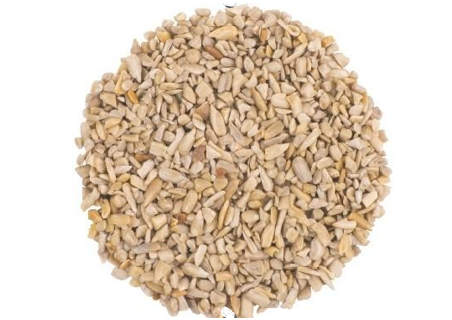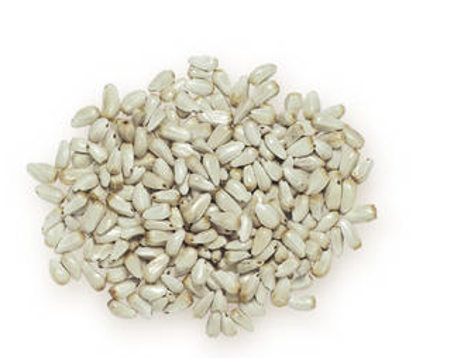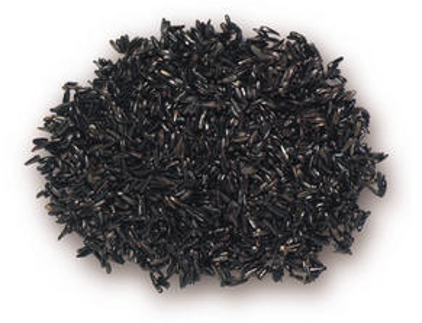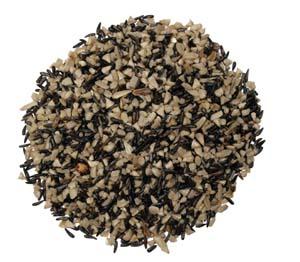All About Bird Seed
Providing the right bird seed is a lot like using native plants in your yard. A great garden provides for our native butterflies, pollinator bees and the local wildlife including the birds. When offering bird food, we want to also offer native seed to our region. We call this regionally formulated bird seed.
Seed quality can vary from store to store. It can be the same type of seed in each store, but the condition of the seed can be quite different. What do we mean by condition and quality? The quality of the bird seed from a bird’s perspective is broken down into two parts.
• Is the seed something I eat? Meaning it is a seed native to the area. When seed eating songbirds are young and just fledged from the nest the parents will show them where to find food. Usually, they will take them to the native plants which produce native seed they need to survive. However, with the decrease in native plants worldwide it is imperative we offer bird feeders with the best quality native bird seed to help supplement their diet.
• Is the seed fresh and nutritious? Like any other animal- birds do not like stale food. Seed can go stale over time and when stored in too warm of an environment. Keep this in mind when storing your own bird seed- for more information on proper seed storage click HERE. Improper storage will accelerate the dissipation of the oil content in the seed. When this happens the fats and proteins will break down quicker. Birds can easily judge this process by the color of the shell.
Food for Thought: Birds see in the ultraviolet light spectrum & studies have shown birds can judge the quality of Black-oil sunflower by how intensely the shell glows blue, the duller the blue the older and less nutritious.
Birds are very picky eaters. Songbirds only get roughly 30% of their nutritional needs from provided food bird feeders. Birds are not desperate for our birdseed and have no problem foraging for food. Therefore, providing food can help birds but if the food is not the correct high-quality seed- the bird will not risk danger, nor waste its time & energy coming.
Food for thought- The difference between Wild Birds Unlimited & other Feed Stores:
• Big box stores have bags of bird seed sitting in their store over a long period of time going stale. Also, they don’t have the proper storage process thru their supply chain, are purchasing poor quality bird seed (dirty, dusty, full of sticks and debris) and are not selling the right seed thus providing a poor-quality bird seed that the birds will avoid- for more information on seeds to avoid click HERE. While this seed can often be inexpensive, the birds will not become regular visitors to the yard and the bag has become wasted money.
• Wild Birds Unlimited seed is sold within a timely manner, we manage our supply chain to ensure proper storage, we purchase only the best quality bird seed (clean, no dirt, dust, sticks or debris) we sell only the bird seed eastern songbirds will eat. Our bags can be more expensive, but the birds will visit your yard regularly, you will not have wasted your money and every day the birds will bring a smile to your face!
Janesville, WI- is in the Midwest/Great Lakes Region in the U.S.A. and we are considered part of the Eastern Field Guide for birding. In bird terms- we are in a geographic area in North America that starts at the East coast and extends to the Rocky Mountain regions cutting off at Montana, Wyoming, Colorado, New Mexico, and Western Texas. While this may seem like a large territory keep in mind, we do not receive all the birds found in the Eastern area, which is why within that region we are sub categorized into the Great Lakes Region. Within this region we get certain birds migrating to and from us during various parts of the year. For more information on birds in our area click HERE and it will direct you to our Bird Facts page where you can explore more about the birds in our area.
Bird Seed for Eastern Songbirds
Black Oil Sunflower is the basic bird seed for all eastern region birds. All eastern birds will eat this seed. If you only offer one type of bird seed this is the one to pick. The shell is relatively soft and splits open very easily. Black oil sunflower is grown to produce sunflower oil. This seed is a favorite of Northern Cardinals, Black-capped Chickadees & House Finches.

Striped Sunflower has a much stronger shell and does not open as easily. Many smaller birds WILL NOT eat this seed, for example: Goldfinch, House Finch, Dark-eyed Junco's etc. Larger birds and birds with larger bills will eat WILL eat this seed including Northern Cardinal, Blue Jays, Tufted Titmouse, Evening Grosbeak etc. Striped Sunflower is usually grown for the bakery industry & is used as a snack for people.

Hulled Sunflower or Sunflower Chips (SF) is the inner part of sunflower seeds without the shell. Just like black-oil sunflower, all eastern songbirds will eat hulled sunflower seeds. While most songbirds do not have a preference of whether the sunflower seeds are hulled or not, one exception is the American Goldfinch. These finicky eaters seem to prefer hulled sunflower vs in-shell and will forgo nyjer seed at times for fine sunflower chips. Particularly, in Spring for nesting & in fall when molting during these times they require more energy and prefer higher protein foods such as fine SF chips. One of the big advantages to this seed is the lack of mess as there are no shells left behind to rake up off the lawn, remove from the garden, or sweep off the patio. The cleanliness of hulled sunflower is often the reason many homeowners will offer sunflower chips versus black oil sunflower seeds. One might think of just letting the seed shells decompose naturally, which they will, but this can cause a problem. Seed shells are acidic and as they decompose the shells alter the pH of the soil to a more acidic (lower) pH. Grass lawns, for example, prefer a neutral soil as do most native plants.
Food for Thought: People talk about the dead lawn below their bird feeders, it is a result of using seed with shells. It makes the ground acidic and thus prevents the growth of grass.

White Proso Millet is a native seed preferred by most ground feeding birds. Some people will refer to it as a filler, but this is not correct. Ground feeding specialists tend to have a diet higher in carbohydrates than protein and Millet when it comes to nutrition is a carbohydrate source. Depending on how the food is offered millet will often be knocked to the ground by the birds that prefer sunflowers because these birds have a diet based on proteins. Songbirds in our area that prefer millet are Slate-colored Juncos, Mourning Doves, Rock Pigeons, Eastern Towhee, Brown-headed Cowbird, and many of our native Sparrows - Chipping, White-throated and White-crowned (only see the white-crowned sparrow during migration). White millet is the most common Proso Millet, but Red Proso Millet is used at times. Proso Millet does have a shell but can be found in our No-Mess blends without the shell. Millet has become now become a popular health food.

Corn is not used extensively in bird feeding. Around 2012 corn became a much sought after commodity to be used in the production of biofuel and corn based sustainable products. During this time, the cost of corn became too expensive to be used consistently in birdseed. Prior to 2012 corn was often the main ingredient in a cheap bag of bird seed and therefore was named a filler within birdseed. However, this was an incorrect labelling of corn because it is a native seed & crop to Midwestern America. The actual problem was the amount of corn used in cheap seed blends. Corn will get moldy quickly, especially if it gets damp, and mold is deadly to birds & wildlife. Corn, like millet, is a carb-based seed so when large quantities are put in bird feeders the birds will knock it to the ground. If there were not enough ground feeding birds in your yard it could pile up, get damp, and grow mold. Corn also gets a negative reputation because it is a favorite of Rock Pigeons which come in large flocks and could make a mess in the backyard. Corn, in small controlled carefully maintained amounts, can be a successful ground feeding food. It can be found in whole kernels, cut, or crushed corn. Songbirds in our area which eat corn are Slate-colored Juncos, Mourning Doves, Rock Pigeons, Eastern Towhee, Brown-headed Cowbird, and many of our native Sparrows - Chipping, White-throated and White-crowned.
Food for Thought: Avoid the crushed corn, the whole kernel is crushed under pressure which produces a lot of dust. Cut corn is a better choice, steel blades are used to cut the corn into pieces producing a cleaner product.

The following three types of birdseed break the rule of offering native eastern seed to songbirds. These non-native seeds, unlike other non-native seeds which are not preferred by Eastern songbirds, have proven to be accepted by eastern songbirds filling a needed niche.
Safflower is a small, white conical seed, like black-oil sunflower seed, which is high in protein and fat. Safflower was introduced to bird feeding in the late 1970's early 1980's. Safflower is used when you do not want squirrels, European Starlings, Red-winged Blackbirds, or the Common Grackle to crowd your feeder and chase away the birds you want to see. Squirrels do not like the taste and bill of the starlings and blackbirds cannot crack open the shell due to its odd shape. Safflower has proven to become a favorite of the Northern Cardinal, Mourning Dove, but other species such as Black-capped Chickadees, Red and White-breasted Nuthatch, Downy and Hairy Woodpeckers and even Blue Jays will eventually eat safflower. This safflower seed is grown primarily to be crushed for baking oil. The White Safflower has been known to grow in WI however it is not technically a native plant species.

Nutra Safflower or Golden Safflower is just like the traditional white safflower, but it has some nutritional improvements and is a little easier for songbirds to eat. NutraSaff has a higher percentage of fat and proteins compared to white safflower. The shell is the same conical shape but a little thinner which makes it easier for birds to open. NutraSaff will help keep squirrels, European Starlings, Red-winged Blackbirds, or the Common Grackle AWAY from your feeders. Many of your favorite birds will try, eat, and make NutraSaff a regular part of their diet. NutraSaff is more readily accepted by our local birds than traditional safflower and over time, you will end up with a dining spot for all kinds of backyard birds, including Northern Cardinals, woodpeckers, nuthatches, chickadees, finches, mourning doves and more. For more details go to our NutraSaff webpage.

Nyjer seed is another of the non-native seeds that has found a use in bird feeding in North America. Nyjer introduced to North America in the 17th century and its primary use is to attract the American Goldfinch. Due to its small size, special nyjer bird feeders are used with extremely small seed ports. These prevent the nyjer from falling out of the feeder but still allow the thinly pointed goldfinch beak to easily access the seed. Over the last few years, many people are finding better goldfinch success with Finch Blend which is a mixture of both Sunflower chips & nyjer. There is a theory that the current sterilization methods may be degrading the nutritional value of the seed and the birds now choosing the more nutritious sunflower chip. Nyjer seed is not grown in North America, it is a seed crop that requires a long hot growing season. The main source of Nyjer seed to North America is India and secondary source is Ethiopia although the crop originated in Nigeria. Heat sterilization is used to kill any invasive entity by preventing germination of the seed and killing any non-native insects who may be arriving with it. Birds that are known to eat nyjer are: American Goldfinch, Pine Siskin, Common Redpolls, House Finch, House Sparrows, and Mourning Doves.
Food for Thought: Many people refer to Nyjer as thistle and often assume it is the seed from our native North American thistle plant, Common Thistle, Cirsium flodmanii but the Latin name for nyjer is Guizotia abyssinica. This is not the same plant or even the same family of plant as the Common Thistle which is part of the Aster (Asteraceae) family. Although an exceedingly small seed nyjer packs a lot of nutrition which is why in India nyjer seed is crushed for its oil.



